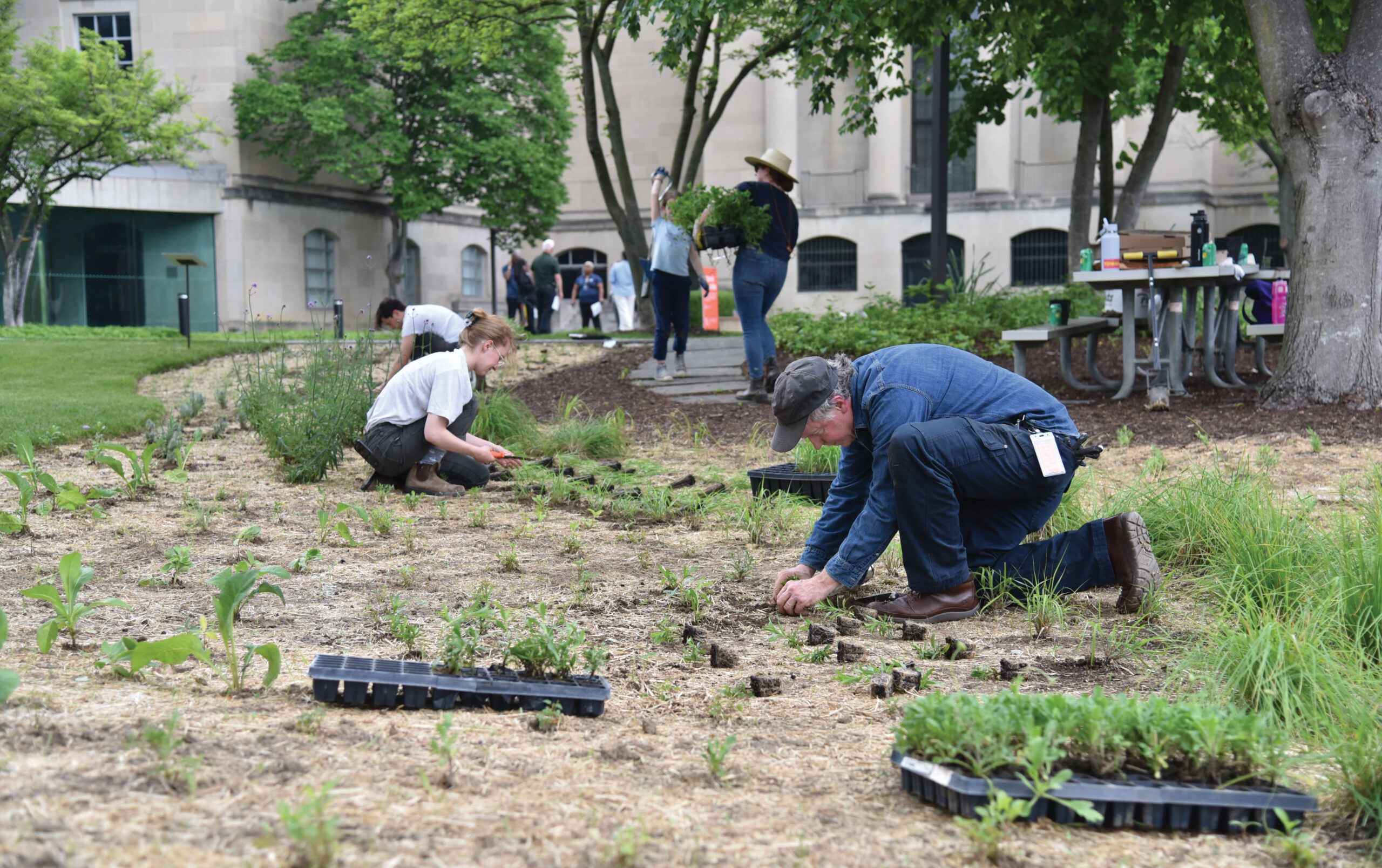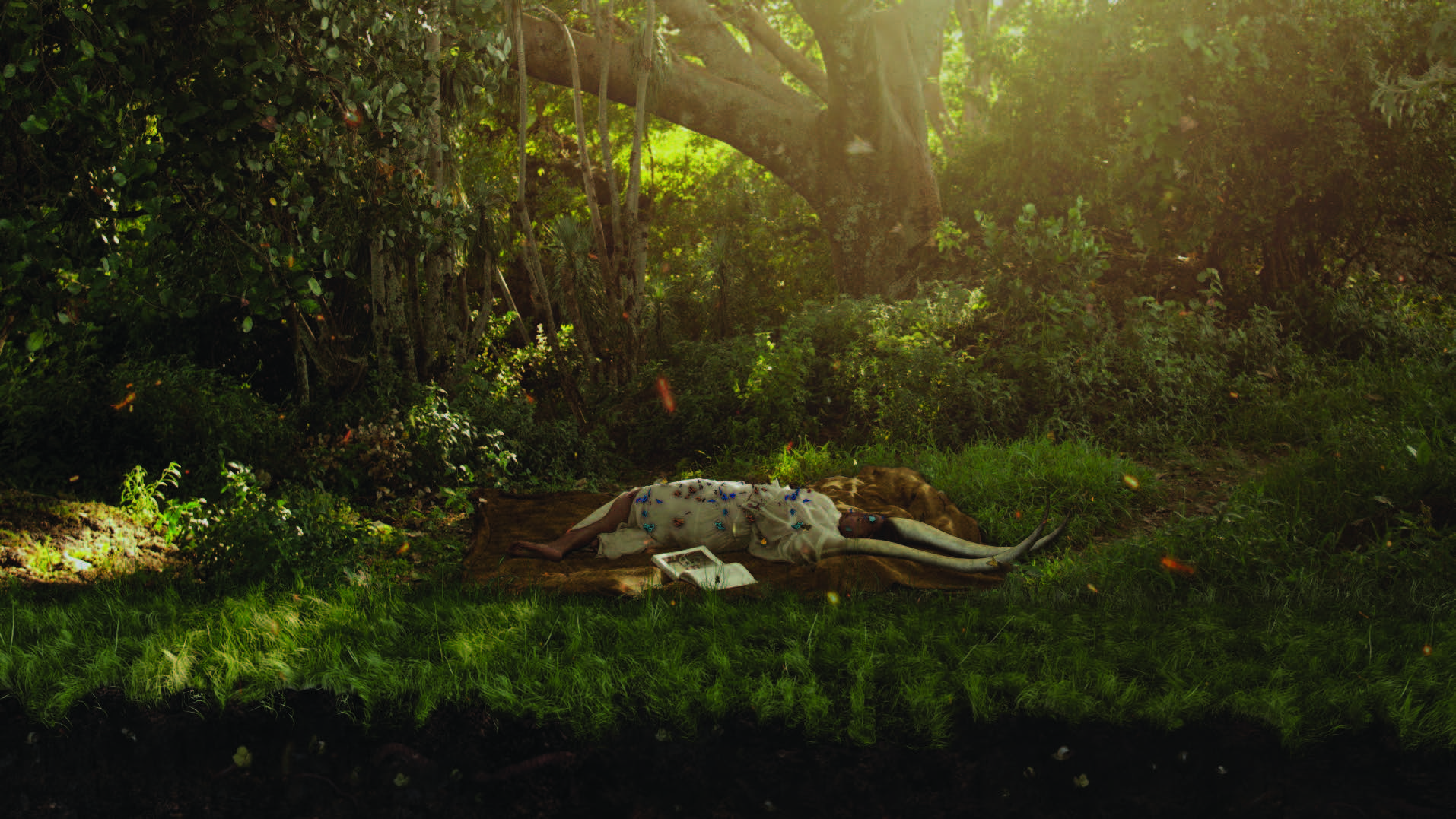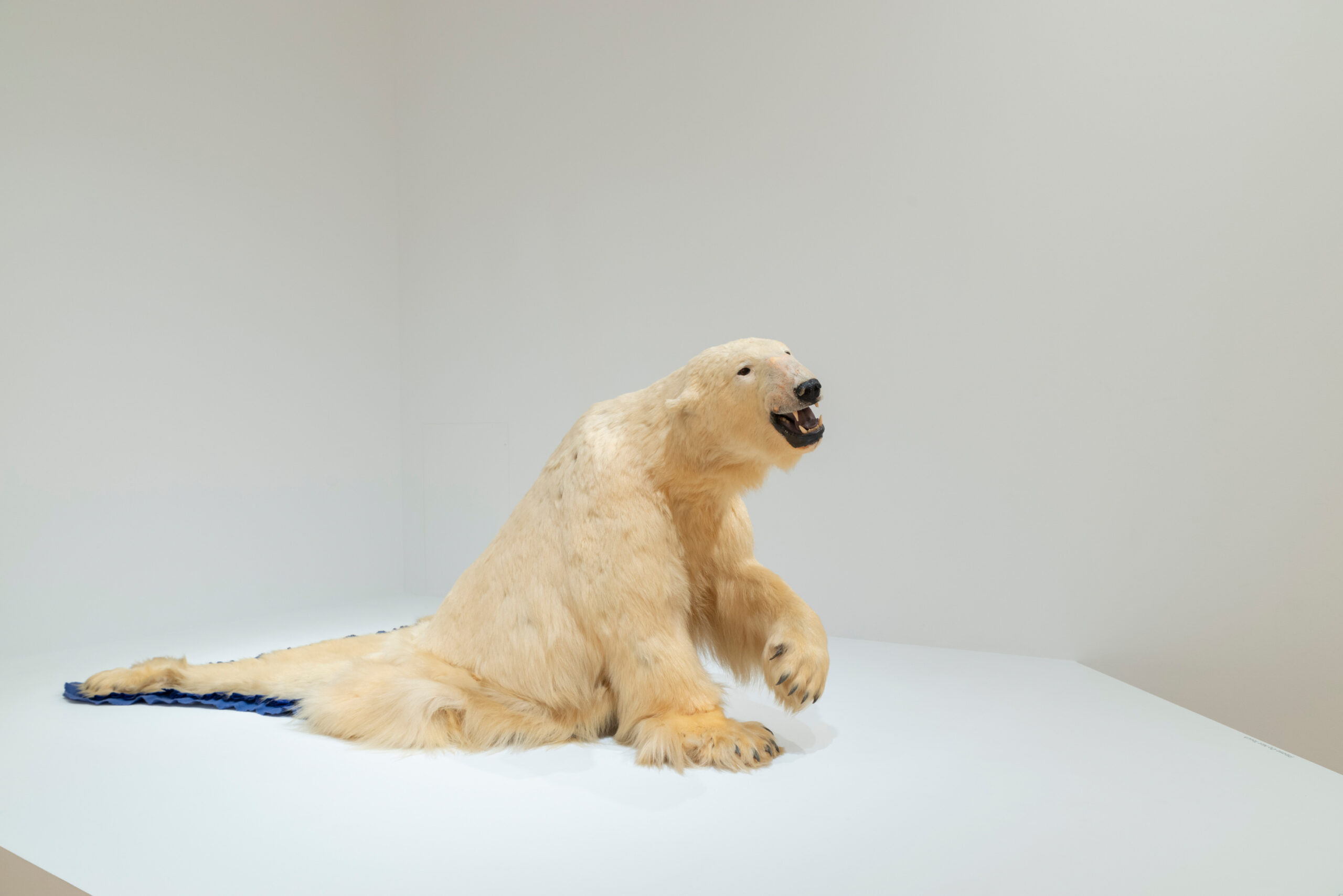
Why does this object with an aggressive racialized scene remain on view at the BMA?
The first time I saw Karl L.H. Müller’s ‘Walrus’ Beer Pitcher, I felt nauseous. The porcelain pitcher on view in the BMA’s American Wing features a white man choking a Chinese man, who is depicted with Western stereotypes of Chinese immigrants—an exaggerated single braid, or queue, long fingernails, small frame, and narrow eyes. Why does this vibrantly colored pitcher have such an aggressively racialized scene? And why is it on view?
Despite its overtly racist imagery, the pitcher, historically called the Heathen Chinee pitcher after the title of a misinterpreted 1870 poem1, was praised for its exceptional design and was among the most saleable items made by the Union Porcelain Works Company in 18762. The scene of the white man attacking a Chinese man is part of a larger American and European history of adorning lavishly decorated table service items with stereotypes of people of color3. Employing laboring and colored bodies to ornament the very objects that serve the products of their labor cemented the idea of hierarchy, servitude, and the “other” into American concepts of racial difference.

The cream colored figures on a light blue background evoke Wedgwood jasperware, a ceramic style championed by British pottery that often depicted Greco-Roman mythological figures4. This neoclassical style promoted Western morality and beauty and was co-opted by American artists who were looking to root American identity in a history of successful empires past. With the pitcher, Müller reinterpreted neoclassicism by proposing two “American” stories. The first legend depicts the white man choking and threatening to knife the Chinese man. The second legend imparts how beer became a popular drink in America and proposes a hierarchy of nationalities and race in America by showing King Gambrinus, the German king of beer, offering beer to “Brother Jonathan,” a figure who is the nineteenth-century precursor to Uncle Sam.
This explicit representation of violence against a Chinese man points to some of the darker, veiled design references to Chinese immigrant populations. The pitcher was used to serve chilled beer through a circular spout, which prevents ice cubes from splashing into a glass5. Both the beer and ice industry in the nineteenth century depended heavily upon the American railroad system that was built by immigrants, formerly enslaved people, and working-class white Americans6. When the Union Porcelain Works Company produced the pitcher, the issue of restricting Chinese immigrant labor specifically regarding the transcontinental railway was widely discussed and referred to in the press as “the Chinese Question.” As Chinese immigrants were willing to work for less than white Americans, resentment grew over the issue of cheap labor. Dennis Kearney, the leader of the Workingmen’s Party of California, in his infamous 1878 speech Our Misery and Despair, pitied the more “sophisticated” white labor force whose work was being stolen by the “cheap working slave” race of Chinese immigrants7.

The hierarchies of race proposed in the “Chinese Question”8 is implicit in Müller’s beer pitcher. The Chinese man is smaller in stature, weakly cowering, while the white man attacking him is much larger and muscular, positioned like a warrior in a Greek vase, fighting with fortitude and honor. It is here that the white man’s crusade against Chinese immigration is translated into the visual culture as a valorized, American legend.
Imagery like that on the ‘Walrus’ Beer Pitcher contributed to the growing negative attitudes and outright racism against people who appeared to be ethnically Chinese. The scapegoating of Chinese people, and more broadly, people of Asian descent, is critical in understanding the development of American culture. The creation of racial hierarchies and popularity of deeply bigoted fiction and imagery demonstrates how anti-Asian racism was deeply imbedded, and accepted, in late 19th-Century American popular culture. This tactic of ‘othering’ is also seen in American politics.
The popularity of deeply bigoted fiction and imagery demonstrates how anti-Asian racism was deeply imbedded, and accepted, in late 19th-Century American popular culture.
In 1882, the United States government passed the Chinese Exclusion Act9, the first of numerous American laws to ban people from a specific country and ethnic background from entering the United States. For 86 years, this Act was upheld until the Hart-Cellar Act put an end to origin-based immigration chokeholds in 196810. Race-based exclusionism is an unforgettable part of American history and is reflected in concepts of American national identity and visual culture, as seen in the ‘Walrus’ Beer Pitcher. Our curatorial staff is examining works like these not only for the skill and complexity of design for which they have always been celebrated but also for the fraught political stories they make visible. It is imperative to continue to look at these works to understand their relevance, continuance, and importance today.
Notes: [1] Heathen Chinee references a poem published in 1870 by Bret Harte (1836-1902) in which two white men try to cheat a Chinese immigrant at a game of cards, only to be outraged when the immigrant wins by also cheating. In his poem, Harte points out the blind hypocrisy of white Americans’ ways. However, the public misunderstood the subtleties of his satire, and the poem was popularized in 1871 after it was retitled from Truthful James to The Heathen Chinee and published with racist illustrations. This poem, and the anti-Chinese sentiments it encouraged, became recognized as an American cultural reference, so much so that the most violent scene from the poem was included on this pitcher six years after the poem’s initial publication.
[2] Alice Cooney Frelinghuysen, American Porcelain, 1770-1920 (Metropolitan Museum of Art, 1989), 183–84.
[3] For example, please see Dawn Odell, “Sugar Boxes and Blackamoors : Ornamental Blackness in Early Meissen Porcelain,” in The Cultural Aesthetics of Eighteenth-Century Porcelain, ed. Alden Cavanagh and Michael E. Yonan (Routledge, 2017). 19th-century examples of fetishized, enslaved, and racist depictions of black bodies on table service and ceramic objects can be found at Chipstone. Other table service item decorated with colored bodies can be found in Union Porcelain Works’ tête-à-tête tea set in the collections of the Metropolitan Museum and the Brooklyn Museum. The decorative usage of Native American bodies has been widely discussed in scholarship, and is at the center of the Smithsonian National American Indian’s exhibition Americans.
[4] Frelinghuysen, American Porcelain, 1770-1920, 184.
[5] Frelinghuysen, 183.
[6] Maureen Ogle, Ambitious Brew: The Story of American Beer (Houghton Mifflin Harcourt, 2006), 61–62; Susanne Freidberg, Fresh: A Perishable History (Cambridge, Mass.: Belknap Press, 2010), 25; “Key Questions – Chinese Railroad Workers in North America,” accessed June 25, 2019, https://web.stanford.edu/group/chineserailroad/cgi-bin/website/faqs/.
[7] “‘Our Misery and Despair’: Kearney Blasts Chinese Immigration,” accessed June 25, 2019, http://historymatters.gmu.edu/d/5046/%7C.
[8] Jennifer Pitman, “China’s Presence at the Centennial Exhibition, Philadelphia, 1876,” Studies in the Decorative Arts 10, no. 1 (2002): 55.
[9] “Chinese Exclusion Act,” AAPF, accessed June 25, 2019, http://aapf.org/chinese-exclusion-act.
[10] “Milestones: 1866–1898 – Office of the Historian,” accessed June 25, 2019, https://history.state.gov/milestones/1866-1898/chinese-immigration; John Kuo Wei Tchen and Dylan Yeats, Yellow Peril!: An Archive of Anti-Asian Fear (London ; New York: Verso, 2014), 23.




